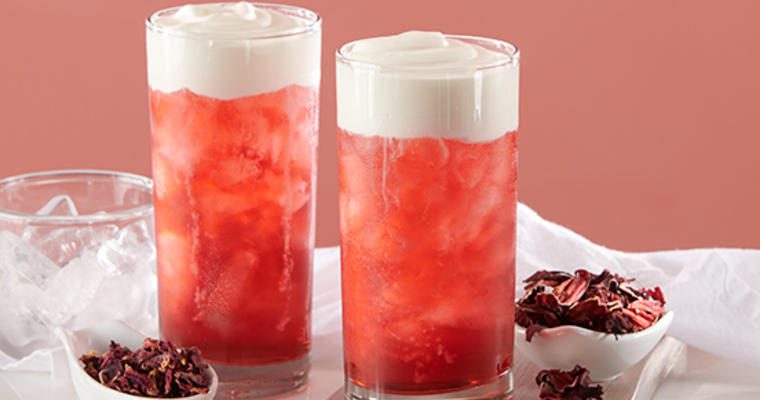Beverage consumers are willing to try adventurous flavor combinations, and this paves the way for cheese-capped tea.
It may not be a household word yet, but neither was cold-brew coffee or bubble tea a few years ago. Cheese-capped tea is taking the baton from bubble tea and running with it. This odd-sounding combination is a Japanese treatment for a glass of cold tea topped with a thick layer of foam made from cream cheese whipped with milk or half and half, and a touch of salt.
The cap sits atop the drink, and with each sip, it introduces a rich, creamy contrast to the bracing and refreshing glass of tea. It’s a drink not far out of the trends cycle starting gate, so the first-to-market opportunity for operators is significant.
“It’s a rapidly expanding opportunity,” says Gordon Food Service Corporate Consulting Chef Gerry Ludwig, CEC. “As strange as cheese-capped tea may sound, when that flavor and texture blends with the tea, it’s dynamite.”
Where’s the opportunity?
Tea drinkers are a growing army, and there’s also an appeal for college and university students. “If you’re a tea drinker, chances are you’re going to like cheese-capped teas,” Ludwig says.
Because it’s photogenic, cheese-capped tea may capture the imagination of younger consumers on Instagram.
A variety of teas work with the cheese cap, and then there’s the ability to move it beyond teas to lemonades, slushies or smoothies. “Foam” is familiar to the North American consumer, thanks to the coffee culture.
“Cheese-capped beverages have potential throughout foodservice segments,” Ludwig says. “They are colorful and visually arresting.”
And leave straws behind. “The straw would make it an all or nothing experience,” he says. “Ideally, you sip the tea for a perfect marriage of flavor and texture.”
Ask your Gordon Food Service Sales Representative for ways to add cheese-capped teas to your beverage business and check out our recipes below.











